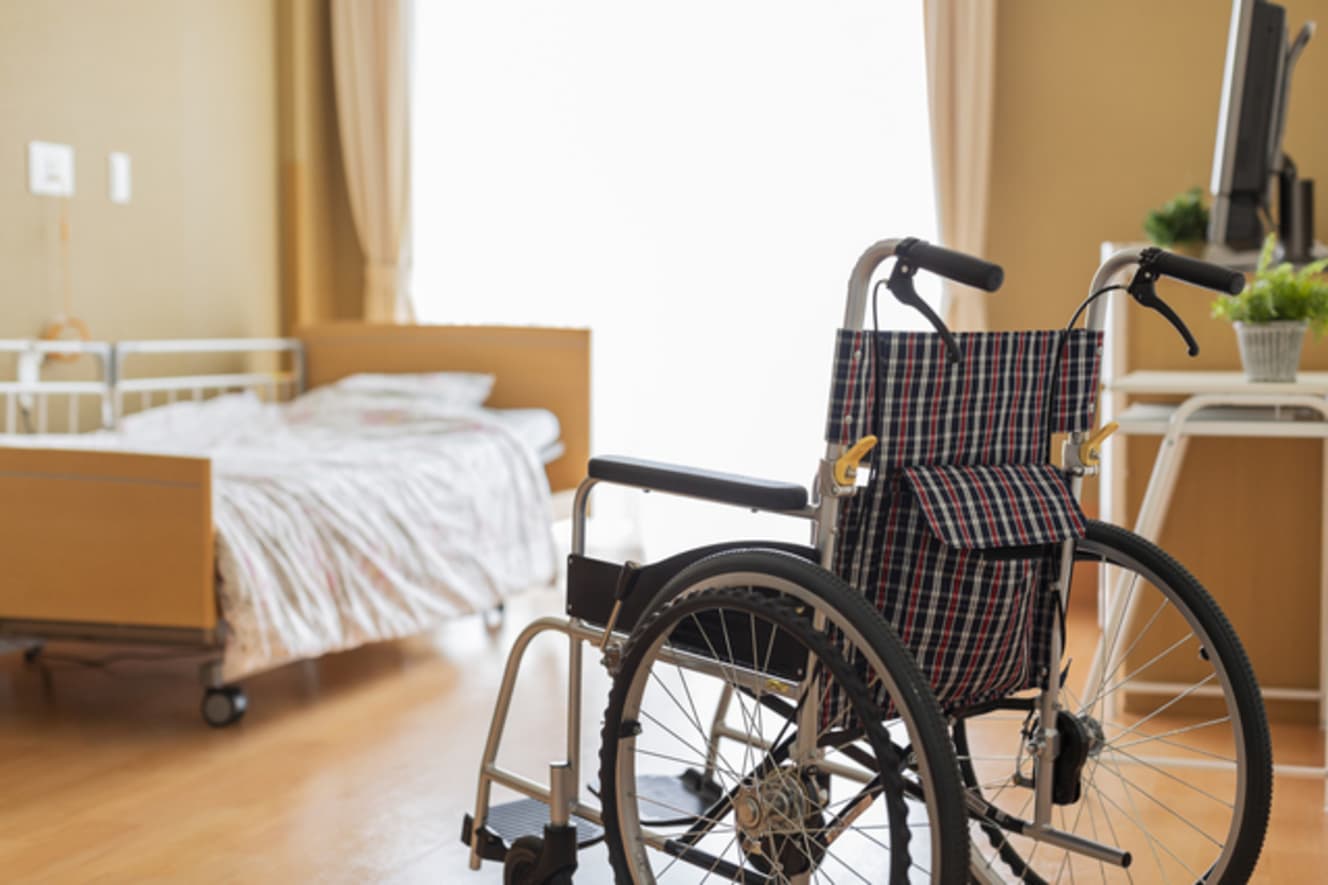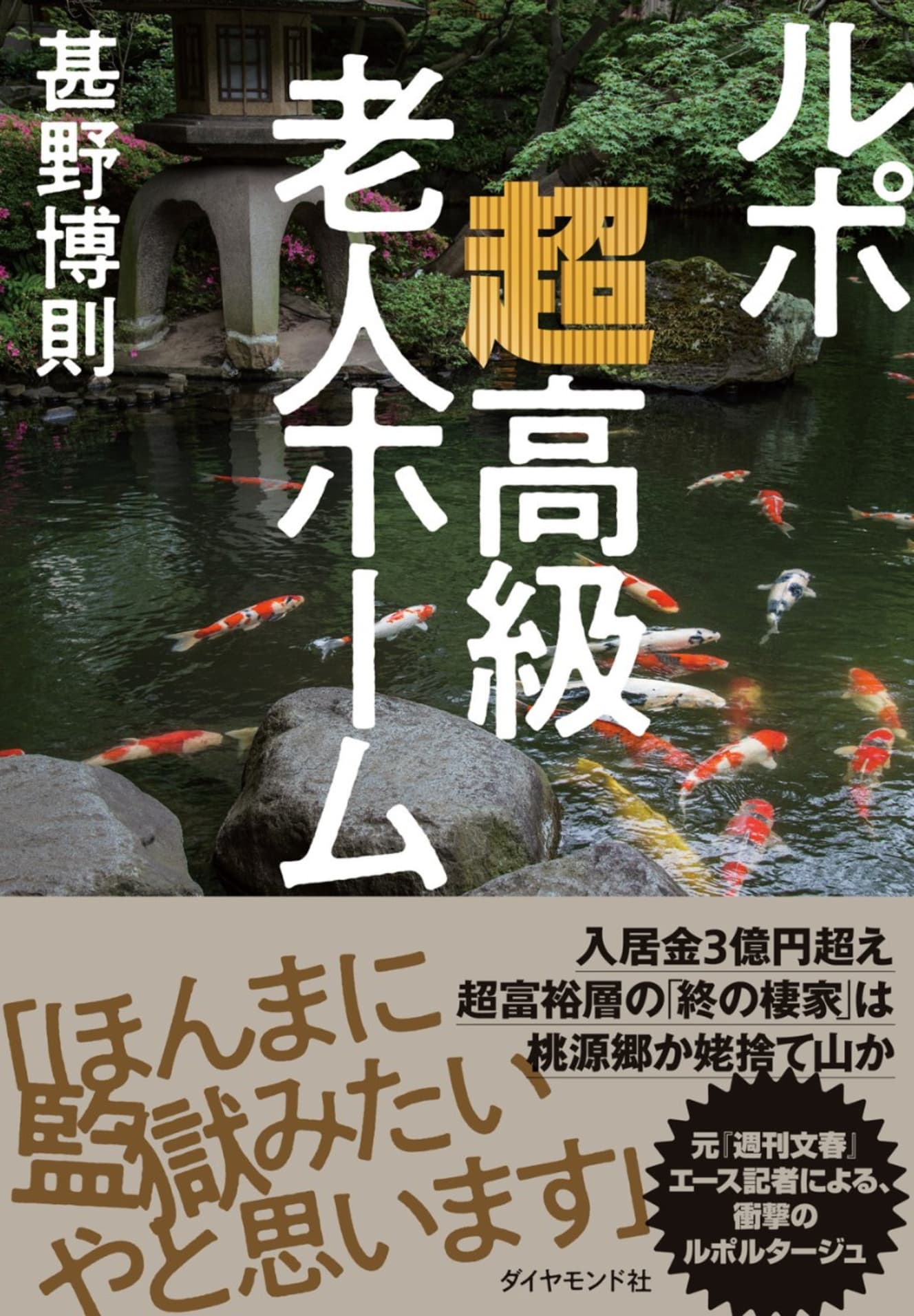Shocking Admission Requirements at Ultra-Luxury Retirement Home Sakurabia Seijo Demand Dignity and Financial Means
Report: A Super Luxury Nursing Home for the Elderly (3)
Nonfiction writer Hironori Jinno’s “Reporto: Super Luxury Nursing Home for the Elderly” (Diamond Inc.), an in-depth report on “closed retirement homes,” is now on sale.
Previous article “[High-end sushi restaurants and even bank counters are available! In the previous article, “Sacravia Seijo, a luxury home for the elderly,” we discussed the unimaginably generous support provided to residents at Sacravia Seijo. What kind of people are eligible for this facility?
Report on Ultra-Luxury Nursing Homes is a book that has become a hot topic. We present an excerpt from this highly discussed work, partially edited for this article.
Fierce Competition for the More Expensive Rooms

It is not widely known that “Sakurabia Seijo,” a facility resembling a luxurious cruise ship, once nearly sank. The management had deteriorated.
The ones who extended a helping hand to this sinking ship were Secom and Mori Building. The two companies jointly invested to establish a new company, officially acquiring management rights from the condominium developer in 1996. Sakurabia Seijo made a fresh start. This was about five years after the bubble economy collapsed. It was also the year after the Long-Term Care Insurance Act was enacted. Matsudaira Kensuke (pseudonym), who serves as a director at the company that operates Sakurabia Seijo, says.
“I have been involved in the senior business for nearly 30 years. The reason places like Sakurabia Seijo can continue operating is because of the high upfront fees we collect from residents. For luxury retirement homes, the range is usually around 50 million yen. This type of business has a limited number of customers. Revenue comes from the number of rooms multiplied by the upfront fees and monthly charges, so the larger the scale, the better the profits. That’s why I often get asked, ‘Aren’t you planning to expand Sakurabia?'”
Indeed, in recent years, many retirement homes developed by major real estate companies have a scale of around 500 rooms. This is because the larger the scale, the more profitable it is, and those profits can be used to fund building repairs and operational costs, allowing the business to run smoothly.
On the flip side, having a small scale with high upfront fees means that any vacant room poses a significant management risk. For a facility like Sakurabia Seijo, where the average upfront fee is about 200 million yen, a vacant room could represent a high risk in terms of management.
“About ten residents pass away each year, so we currently have around ten rooms available.”
When I checked the website, it indeed indicated that as of the end of December 2023, rooms around 60 square meters were vacant. On the other hand, the spacious top-floor rooms and popular corner rooms were already fully occupied.
What I found particularly interesting in Mr. Matsudaira’s remarks was that about 30 households of current residents are hoping to move into larger top-floor or corner rooms, and they are waiting for vacancies to become available. In other words, even though there are vacancies, they are primarily rooms around 60 square meters, while the competition among existing residents to secure rooms over 100 square meters is already intense. Is this constant striving for better driven by the habits of wealthy seniors, or perhaps by a sense of superiority?

The Thorough Preparedness of Reserving a Room Starting in Their 50s
“Some business executives begin considering their final years while they are still in their 50s or 60s, and some choose to move in after passing their companies on to their children.”
Looking ahead to the future, they secure a room by depositing a 1 million yen security deposit. It seems that for these individuals, Sakurabia Seijo represents the final stage of their lives.
“Children visit to see their parents here. During these visits, they experience our services, and after their parents pass away, they often decide they want to move in themselves. In the past, we mainly had people who came for tours and joined the waiting list for future availability. Therefore, those who wanted to move in immediately were unable to do so. With the impact of COVID-19 preventing us from holding tours, now is the chance for those who are looking to move in immediately to seize the opportunity.”
However, unlike a supermarket sale, there are not many who can impulsively sign a contract for a room costing around 200 million yen.
Much like how exclusive tea houses in Kyoto, famous restaurants, and Ginza clubs create a sense of luxury by turning away casual visitors, the high upfront fee required to reserve a room from a young age adds to the allure. Nonetheless, I still did not fully understand what makes the facility so attractive. My curiosity was piqued about what kind of individuals are allowed to move into Sakurabia Seijo.
“Dignity” and “Financial Means” Are the Minimum Requirements
According to Mr. Matsudaira:
“We look for individuals who can build good relationships with the current residents. It’s about dignity and, of course, financial means. We assess these qualities during the interview process. Prospective residents should also evaluate whether this place is suitable for their life. It’s a mutual decision, like an arranged marriage. Additionally, wealthy individuals have networks. Whether through business connections or relationships from their school days, having a recommendation from someone already residing here who is trusted and says, ‘This place is great,’ is the best scenario for those considering moving in.”
As expected, I was intrigued by Mr. Matsudaira’s mention of “interviews.”
Even with a recommendation and sufficient financial means, an interview is conducted. Naturally, an interview implies a form of judgment, and if the reason for rejection is based on dignity, it might be quite hurtful for prospective residents. While pondering this, I asked Mr. Matsudaira about the criteria for deciding on admissions, and he continued:
“Among fee-based retirement homes with care services, we fall into a very rare category known as ‘independent living.’ Those who can enter our facility are healthy individuals who can manage their daily activities on their own at the time of admission.”
However, admission is only available from the age of 70. Additionally, those who are already receiving care services, even if they are over 70, are not eligible to move in.
Further regarding the criteria for dignity, Mr. Matsudaira explained that, in a communal living environment, those who are overly self-centered and do not listen to others might be indirectly discouraged. For instance, the facility might convey that such a person would have a “constrained living experience” and subtly decline their application. The facility assesses the quality of a person’s dignity based on these standards.
However, this is quite understandable. Even other high-end establishments that turn away casual visitors likely operate similarly. It seems plausible that they are experimenting with techniques to ensure that those who are rejected do not harbor anger, reflecting the challenging task of managing these delicate situations.

The book “Report: Ultra-Luxury Senior Homes,” by former Weekly Bunshun star reporter Hiroshi Jino, delves into the realities of various ultra-luxury senior homes through undercover investigation. It is currently on sale and receiving praise from Diamond Inc.
Interview and text: Hironori Jinno